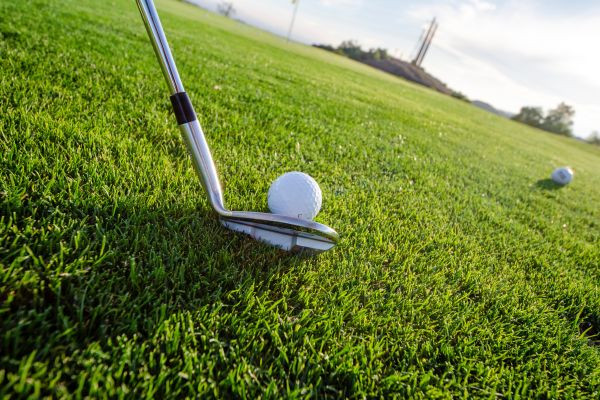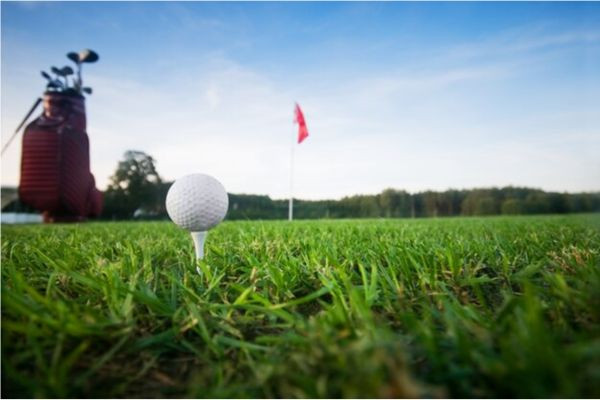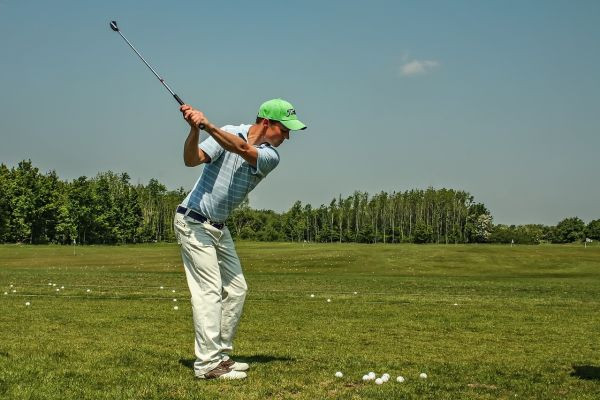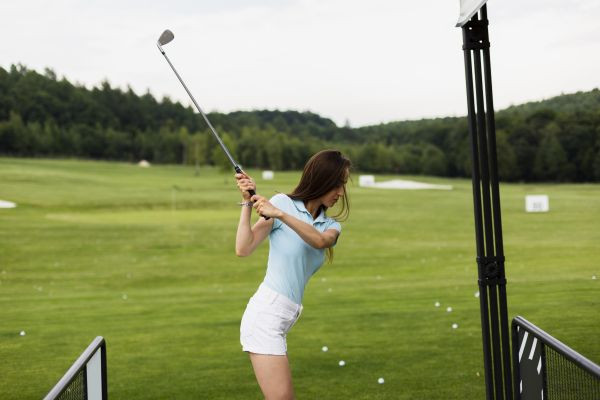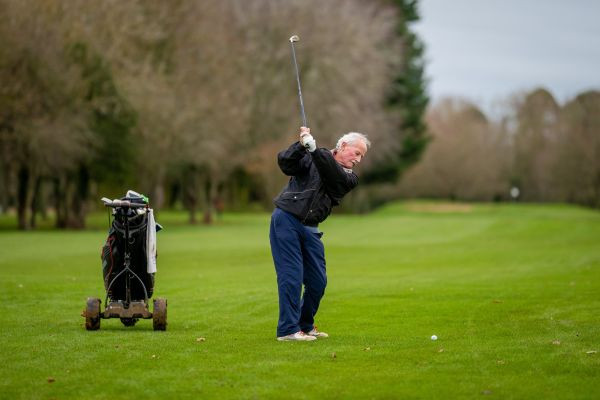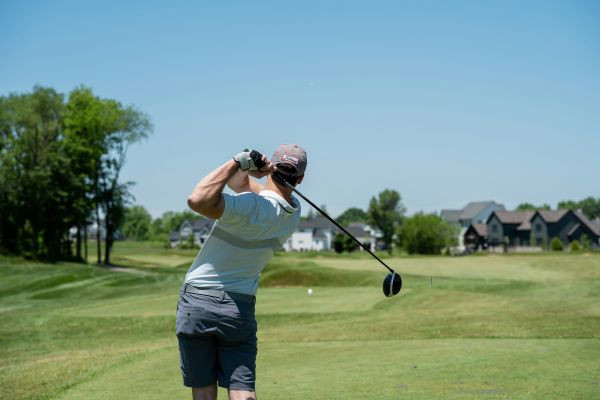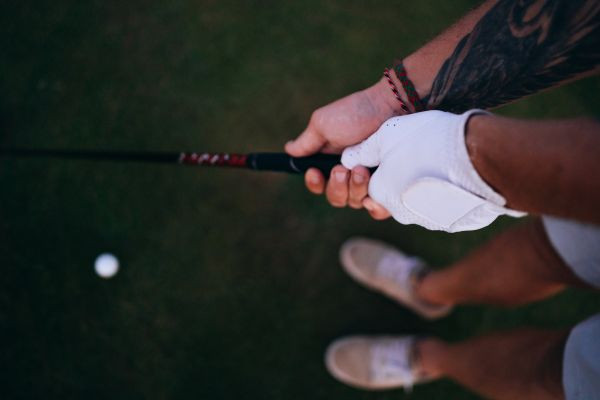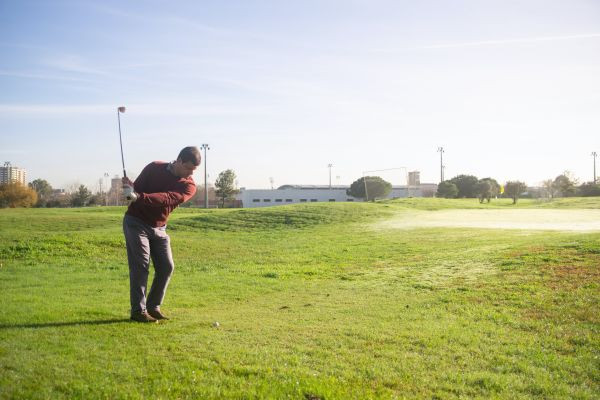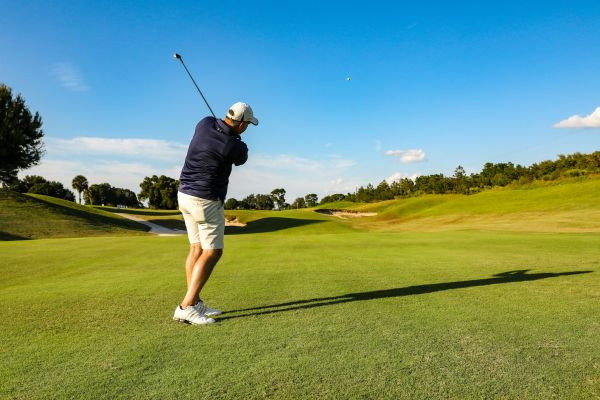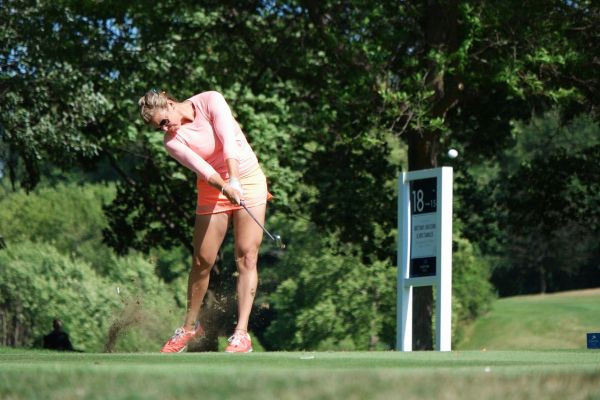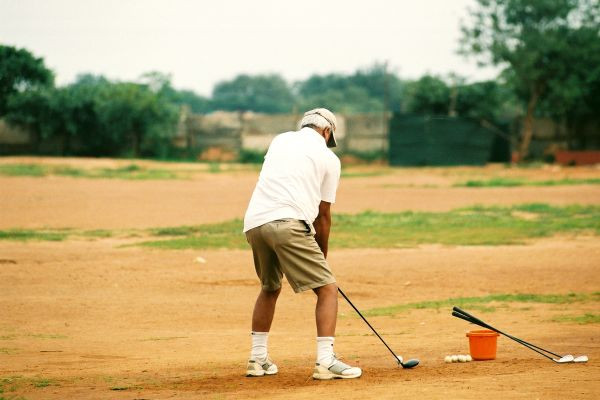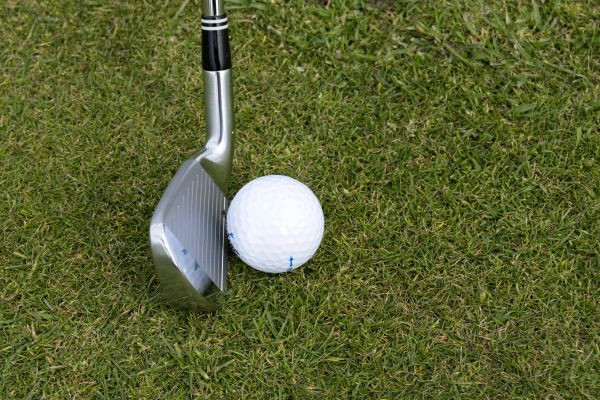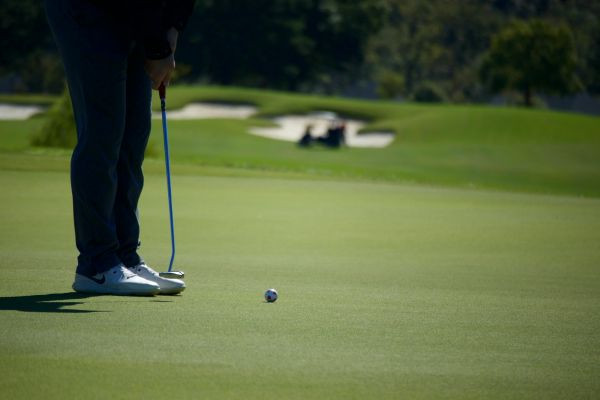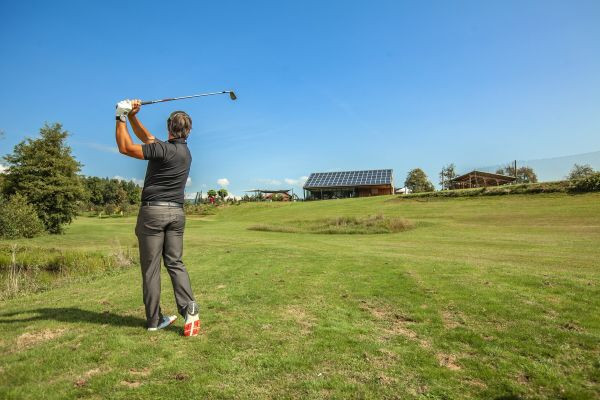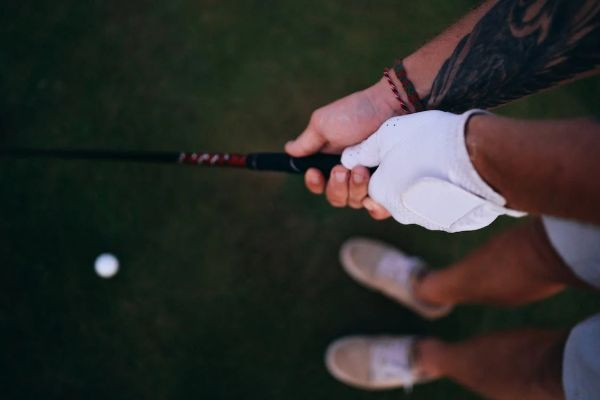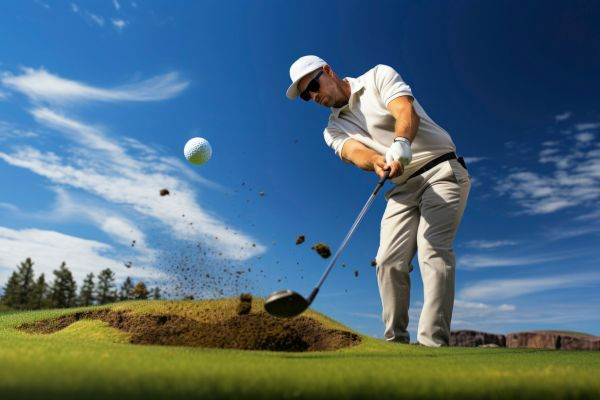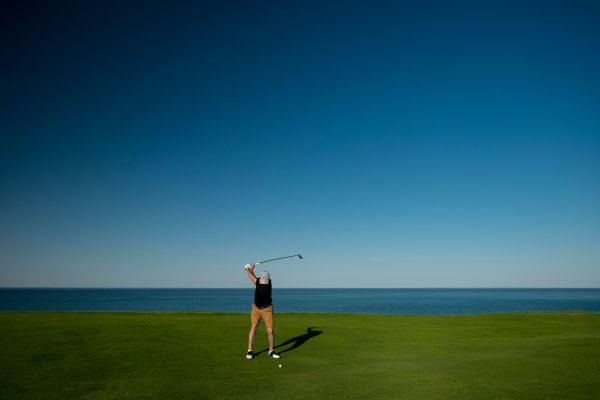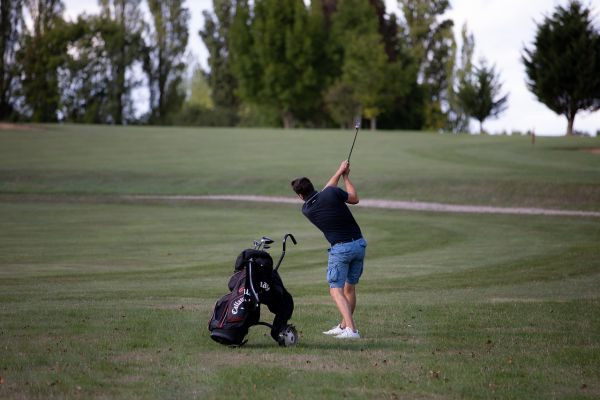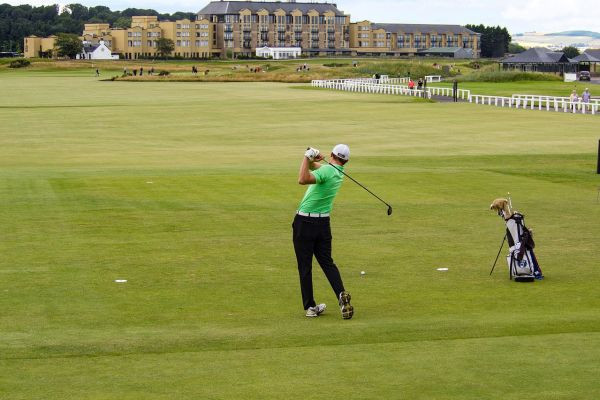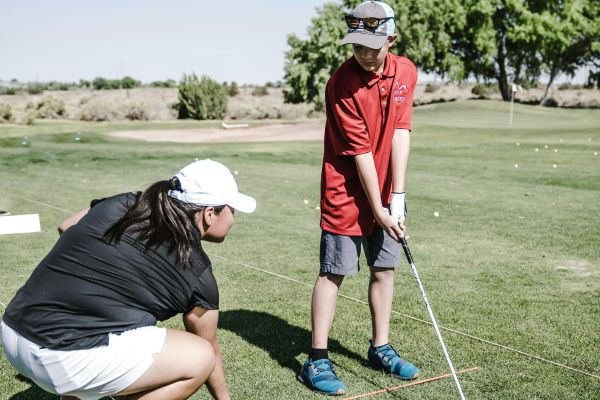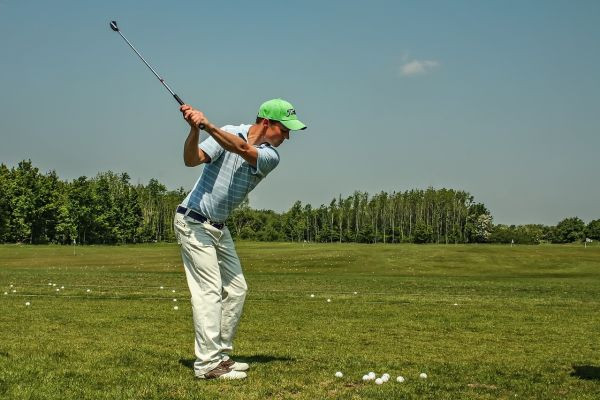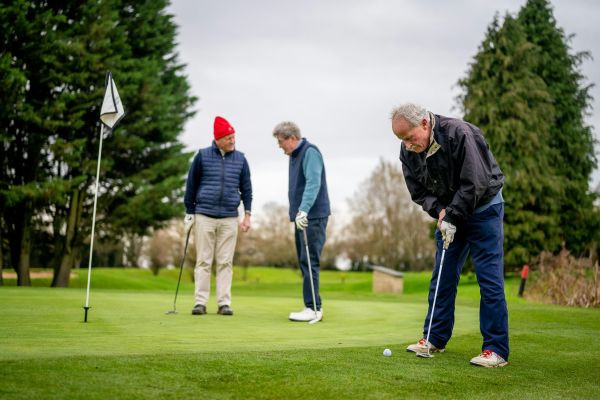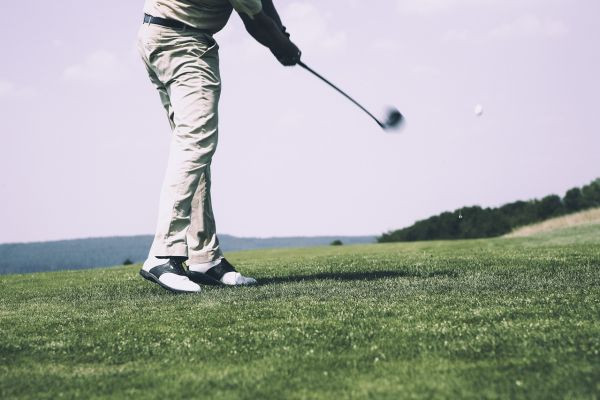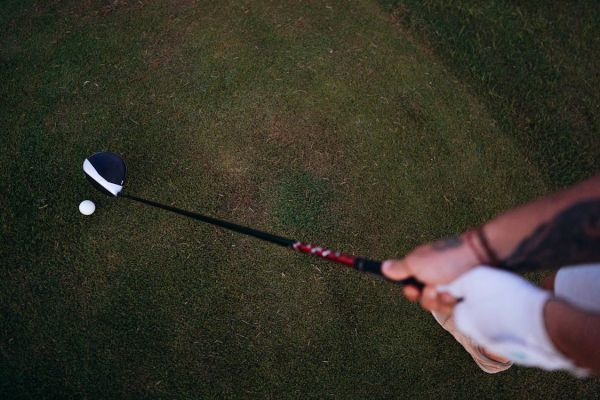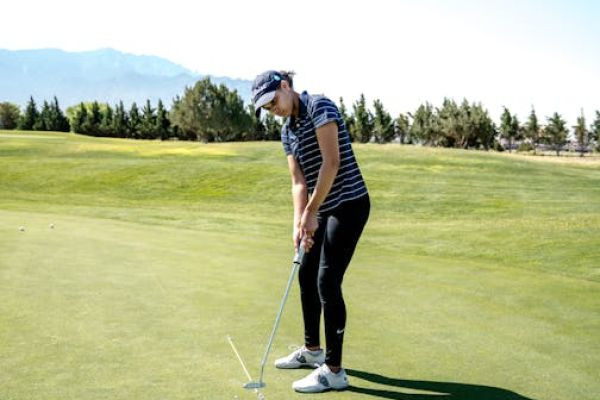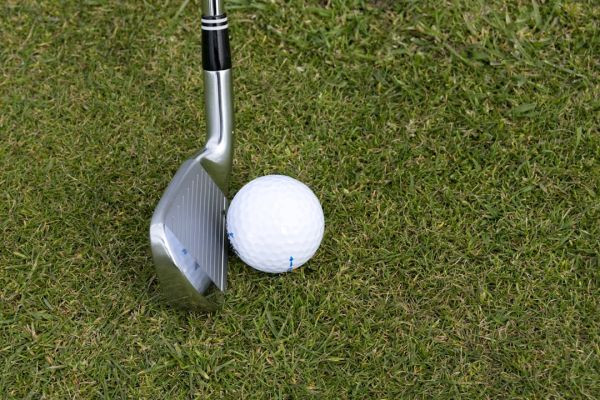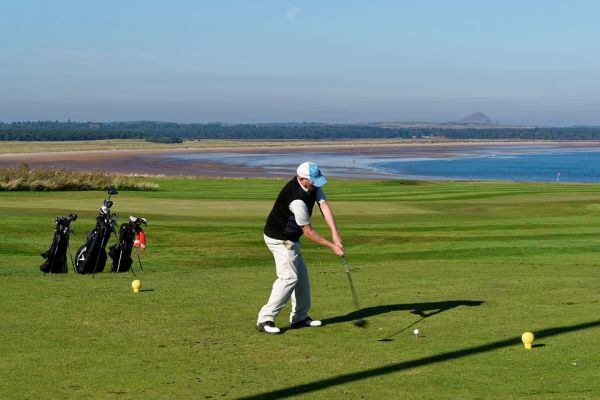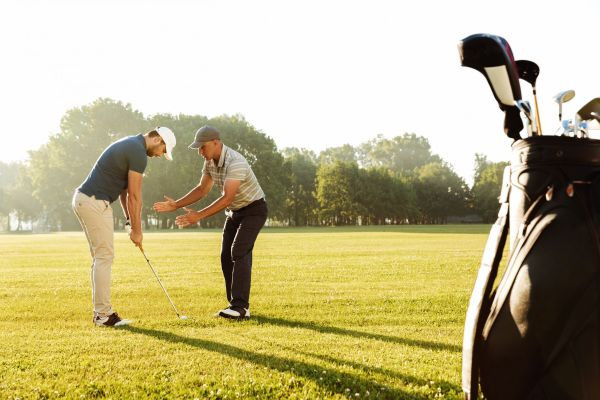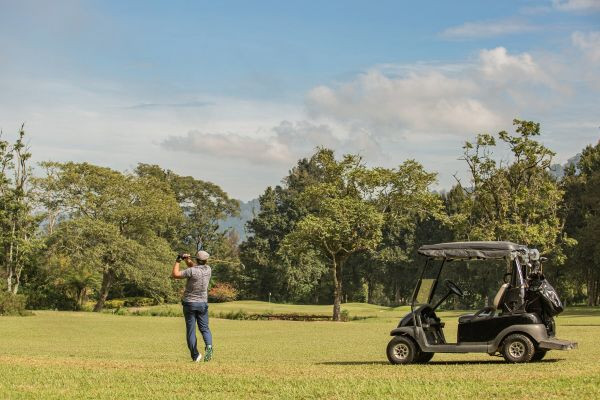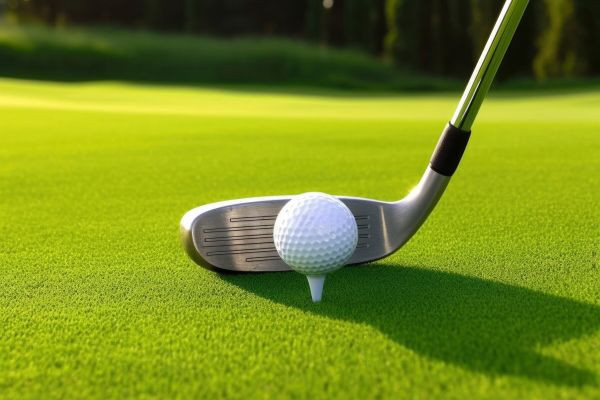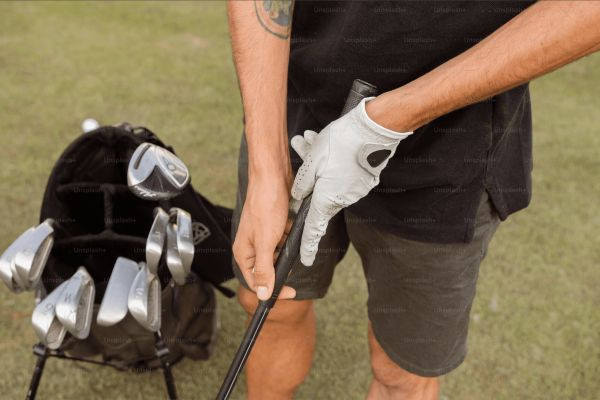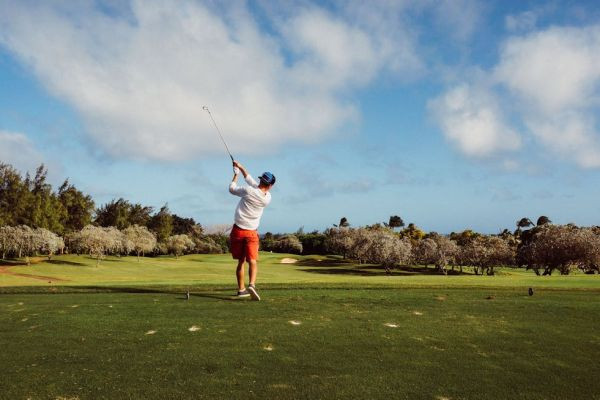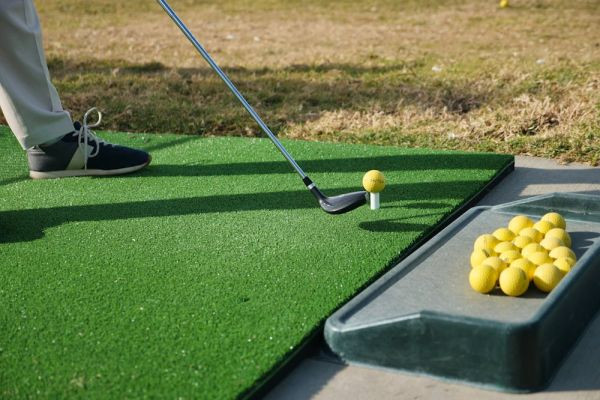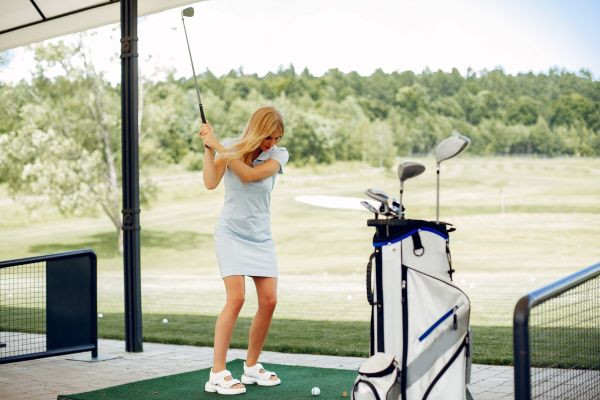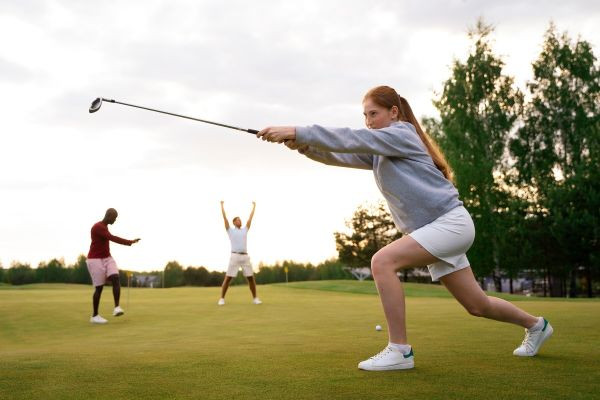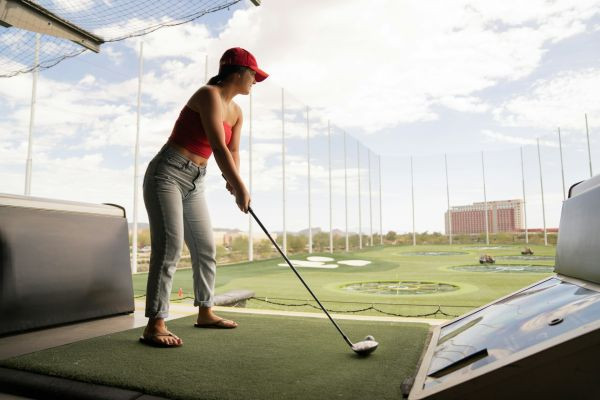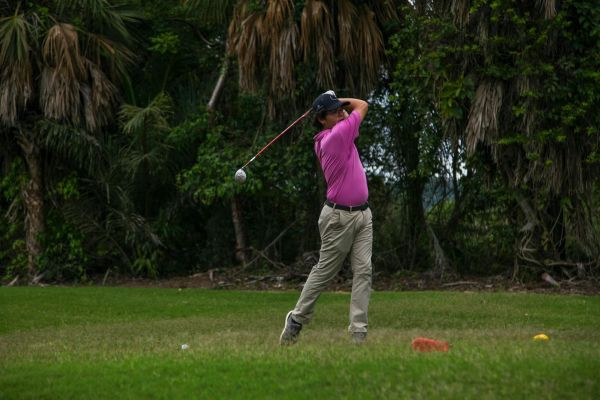Unlocking the Secrets of the Perfect Golf Backswing: A Comprehensive Guide
Golf is a sport that requires skill and precision. If someone wants to be good at golf then he has to learn about all aspects of it. Backswing is one of the most important aspects of golf. Everyone kn..

Golf is a sport that requires skill and precision. If someone wants to be good at golf then he has to learn about all aspects of it. Backswing is one of the most important aspects of golf. Everyone knows that a good backswing is necessary for a good downswing and a good downswing is necessary for the flight of the ball and flight of the ball is necessary for good scores. So, in this guide, we are going to analyze, understand and solve everything about the backswing.
Fundamentals of the Golf Backswing
The Golf Swing Plane
Picture a line running from the ball through your shoulders and extending upward; this represents your swing plane. It dictates the path your club should take during both the backswing and downswing.
Sticking to the swing plane is crucial as it directly impacts the precision and power of your shots. Straying from this path can result in curves reduced distance and overall inconsistency. Envision this plane as you move back, ensuring that your club stays in line with it.
This mental image not only aids in maintaining a swing but also helps ensure that your shots are strong and accurate.
Role of Your Grip
Your grip serves as the connection point between you and your club making it a vital component of your swing. Holding onto the club tightly may hinder the flow of your swing while a loose grip can lead to difficulties controlling the clubface.
The key is to find a grip that allows for wrist movement during the backswing enabling a powerful transition into the downswing.
Try experimenting with ways of holding the club and adjusting your grip pressure to find what feels most comfortable, for you whether it's interlocking, overlapping or using a baseball grip.
Remember, having the right grip is key to controlling the clubface, which ultimately leads to precise shots.
Stance and Posture
Your stance and posture form the foundation of your swing. Start by placing your feet about shoulder width to establish stability and balance. Keep a bend in your knees. Lean forward slightly from your hips to engage your core muscles preparing your body for the swing ahead.
This athletic stance allows for a rotation of the body during the backswing creating a coil that is essential for generating speed and power during the downswing. Pay attention to aligning your feet, hips and shoulders parallel to the target line ensuring a path for the club's movement.
Maintaining stance and posture not only helps prevent injuries but also enhances the effectiveness of your swing making them crucial components of mastering your backswing technique.
Key Phases of the Backswing
Perfecting the backswing in golf involves a series of coordinated steps that each contribute significantly to performance.
The Takeaway
The start of the backswing, known as The takeaway lays the groundwork for what comes. Getting this phase right is essential. It kicks off with a movement of the club, arms and shoulders away from the ball in one motion. The aim here is to create an arc while keeping the club in line with the intended swing path.
Being mindful of Common Errors during The takeaway is crucial. One common mistake is initiating the movement with the hands or wrists of the shoulders resulting in a disrupted swing path. Another typical slip up is either rotating or under rotating the shoulders, which can throw off balance and timing during the swing.
Transition to the Top
After The Beginning comes Transitioning to the Peak, a crucial phase in the backswing. This stage requires finesse and accuracy as golfers strive to reach The Correct Position at the top of their swing. Achieving this involves a combination of wrist hinge, shoulder rotation and hip movement culminating in a position for a strong downswing.
Steering clear of pitfalls during this transition is vital, for a backswing. One common issue that golfers often face is lifting their arms without shoulder rotation leading to a narrow swing path. On the other hand focusing too much on turning without maintaining arm structure can result in a swing plane that is too flat.
The two main stages of the backswing, known as The Takeaway and Transition to the Top are steps in creating a controlled and consistent swing.
Components of a Perfect Backswing

Source:https://www.pexels.com/photo/male-golf-player-on-professional-golf-course-golfer-with-golf-club-taking-a-shot-17215820/
The Left Arm
Maintaining a straight arm during the backswing is, like setting the mast of a ship; it dictates the direction and steadiness of your swing. This straightness should be upheld from when the club starts moving until it reaches its point. It helps create an arc, maximizes speed potential and contributes to maintaining a consistent swing plane.
The Left Heel
Keeping your left heel on the ground serves as an anchor anchoring you in place while facilitating a body turn. Many golfers feel inclined to lift their heel especially if they lack flexibility, which can compromise balance and restrict their turn. By keeping it planted firmly on the ground you enable hip and shoulder rotation thus increasing power throughout your swing.
The Right Knee
Maintaining a bend in the right knee is an art that subtly reminds us of our initial stance. This gentle flex acts, like a coiled spring, poised to release energy. It plays a role in keeping the hips and shoulders aligned ensuring a posture necessary for a smooth transition into the downswing.
The Left Knee
The left knee's movement towards the ball serves as a guide for weight shift and body rotation. It helps prevent mistakes like rotation or collapsing towards the right side, which can disrupt balance and lead to an inconsistent swing path. This subtle knee adjustment aids in maintaining a stance while facilitating a backswing.
Hip Rotation
Hip rotation is what propels the backswing turning it from an arm motion into a powerful full body twist. Starting from the ground up it involves hip movement while maintaining balance and control. This rotational action sets the foundation for the chain reaction of movements, for generating speed and strength.
Head Position
Maintaining a steady Head Position amidst the dynamic movements of the backswing is crucial. It signifies focus and control, acting as a fixed point around which the complexities of the swing orbit. A stable head helps in keeping the spine angle consistent, which is essential for a precise and powerful strike.
Weight Transfer
The fluid transfer of Weight from the front foot to the back during the backswing is a dance of balance, setting the rhythm for the entire swing. It's a controlled shift that loads the body with potential energy, ready to be unleashed in the downswing. Mastering this weight dance is essential for maximizing power without sacrificing control.
Tempo
The Tempo of the backswing is the rhythm section of the swing's symphony. It shouldn't rush but instead unfold with a deliberate grace, allowing every component to play its part fully. A slower, controlled backswing sets a rhythm that ensures a more explosive and synchronized downswing.
Practical Tips and Drills
Exercises for Flexibility and Strength
Flexibility and strength are the cornerstones of a dynamic golf swing, providing the necessary range of motion and the power to execute a fluid backswing.
- Yoga and Pilates: Yoga and Pilates are options for golfers as they help improve core strength, flexibility and balance which can have an impact on your swing technique. Adding these practices to your workout routine can really boost your performance on the course
- Resistance Band Workouts: Incorporating resistance bands into your workouts is another way to strengthen the muscles involved in your golf swing. By doing exercises that mimic the movements of a golf swing you can enhance muscle memory and generate power in your shots.
- Dynamic Stretching: Prior to heading out to play golf or practice at the range it's beneficial to engage in stretching exercises to warm up your muscles. Arm circles, torso twists and leg swings are all ways to loosen up and reduce the risk of injury.
Drills for the Perfect Takeaway
Perfecting your takeaway is essential for maintaining consistency throughout your swing. Here are some drills you can try.
- One-Piece Takeaway Drill: Focus on moving your shoulders, arms and club as one unit during the part of your backswing. Using a mirror or recording yourself can help ensure that this movement is smooth and that your body and club are working in sync.
- Club Parallel Drill: Stop when the club reaches parallel, to the ground at the end of your takeaway. Check that the clubface is square and that you haven't hinged your wrists early. This exercise promotes a controlled and precise beginning to your swing.
Techniques for a Consistent Swing Plane
Consistency in your swing path from the backswing to the downswing is crucial for shot making.
- Alignment Stick Drill: Place alignment sticks on the ground to mimic your target line and practice swinging along this trajectory. This visual guide aids in maintaining a swing path.
- Towel Under Arm Drill: Insert a towel under your armpit (for handed golfers) and retain it throughout your swing. If the towel falls it indicates that your arm is moving away from your body suggesting an issue with the swing path.
Fine-Tuning Your Backswing
Tailoring the Backswing to Your Play Style
Recognizing that each golfer's swing is unique akin to their fingerprint is vital on the path to becoming a better golfer. Here's how you can adjust your backswing to optimize your strengths and align with your playing style:
- Personalized Swing Analysis: Utilize technology or seek guidance from a coach to assess your swing. Identify aspects of your backswing that correspond with shots. Highlighting these traits in your swing can enhance your playing style.
- Experiment with Variations: Don't be afraid to experiment with changes in your backswing. Even subtle tweaks in your grip, stance or how you start your swing back can make a difference in how you swing overall. Find what feels most comfortable and effective for you.
Studying Professional Golfers’ Backswings
Professional golfers' swings are full of lessons and ideas. By observing their methods you can gain insights into the backswings and possibly discover elements that suit your own style.
- Analyze the Greats: Pick a golfer whose playing style you admire or find similar to yours. Look closely at their backswing techniques paying attention to factors, like rhythm swing path and how they kick off their takeaway.
- Incorporate Proven Techniques: If there's a technique or move that looks effective think about how it could be integrated into your swing. For example observing how a pro golfer maintains their angle or head position during the backswing might provide hints on enhancing your technique.
Advanced Drills and Techniques
To further polish up your backswing try incorporating drills that challenge your technique and enhance consistency.
- Slow-motion Swings: Practicing your backswing in motion can help you become more aware of each stage of the swing. It allows you to sense and adjust your body's positioning leading to a controlled backswing.
- Feedback Devices: Utilizing swing trainers or feedback devices that offer real time insights into your backswing can be beneficial. These tools provide information on elements like swing speed, plane and angle of attack.
Adjusting for Common Errors
There are mistakes that can hinder a golfer's backswing effectiveness. Here are strategies for recognizing and rectifying these issues:
- Over-Swinging: Some golfers mistakenly think that a longer backswing results in power. However, this often leads to a loss of control and decreased accuracy. To address this focus on maintaining a controlled backswing with a lead arm and a complete body turn without overextending.
- Poor Weight Transfer: Incorrect or insufficient weight transfer during the backswing can impact balance and power. Ensure smooth weight shift to the foot without swaying. Practicing drills focusing on weight transfer can help develop muscle memory for this movement.
- Rushing the Takeaway: Moving quickly during the takeaway can disrupt the flow and rhythm of your swing. Try bringing the club with care and, at a pace ensuring you keep a steady tempo throughout the entire motion.
Conclusion
Taking on the challenge of improving your golf swing is not just a technical enterprise: it is a journey of exploration, self-discovery and constant betterment. This adventure may be precise and complex and time-consuming but it offers large and substantial rewards. These include better scores on the golf course, greater constancy and also the satisfaction and self-assurance that come from mastering such a significant part of an intricate sport.
Frequently Asked Questions (FAQs)
How do I know if my swing plane is correct?
A proper swing plane feels intuitive and effective. One can verify this through recording oneself or using mirrors, making sure that the clubhead adheres to a path that is neither excessively steep nor excessively shallow in relation to one's stance. Additionally, feedback from a coach or a swing analysis app can provide unbiased perspectives.
What exercises can improve my backswing flexibility?
Enhancing shoulder rotation, hip flexibility and core strength are vital for your overall health. Yoga and Pilates are exceptional practices for flexibility and targeted stretches for the shoulders, back and hips directly enhance your backswing range of motion.
Why is my left arm bending during the backswing?
The presence of a left arm that is bent suggests that you may lack the range of motion and/or the strength to keep your arm straight. You might have some grip pressure that is too tight or you might be improperly initiating your backswing. The next time you play, make sure to focus on playing shots where the left arm remains straight and use exercise to strengthen and improve the flexibility of your left arm and your shoulders.
How can I maintain my head position throughout the swing?
In order to stabilize your head, concentrate on maintaining a steady spinal posture as you swing. Complementary routines that are geared to maintain equilibrium and fortify the core muscles can be beneficial. A person should swing their club while they are concentrating on keeping their focus on one point. To help maintain good posture in the head area, people can rely upon gear like a head restriction to keep their head obstructed while they work on their swing.
What drills can help improve my takeaway?
Highly efficient, the one-piece takeaway drill synchronizes the movement of the club, hands and shoulders. To gain skill in this area, slowly lift the club with these three entities moving as one precisely. And then take heed that the clubhead is exterior to the hands, thereby giving you a perfect line of action.
How does the backswing differ for drivers vs. irons?
When it comes to hitting with your driver, make your stance slightly wider and allow for a little more tilt in your spine to match the new shaft length and the reduced angle required for the ball to be in line with the club face. The basics stay the same but the implementation of those basics will vary slightly in the interest of achieving the flights that will serve your purpose the most with each specific club.
Can I adjust my backswing to fix a slice?
Yes, modification of your backswing can be beneficial in the remedy of a slice. To assist with this, pay attention to the secure grip, the straight left arm (assume you are right-hand dominant) and the elimination of an outside-in swing path. Moreover, the introduction of a square clubface at the top can lead to welcome modifications, all serving to minimize a slice.



